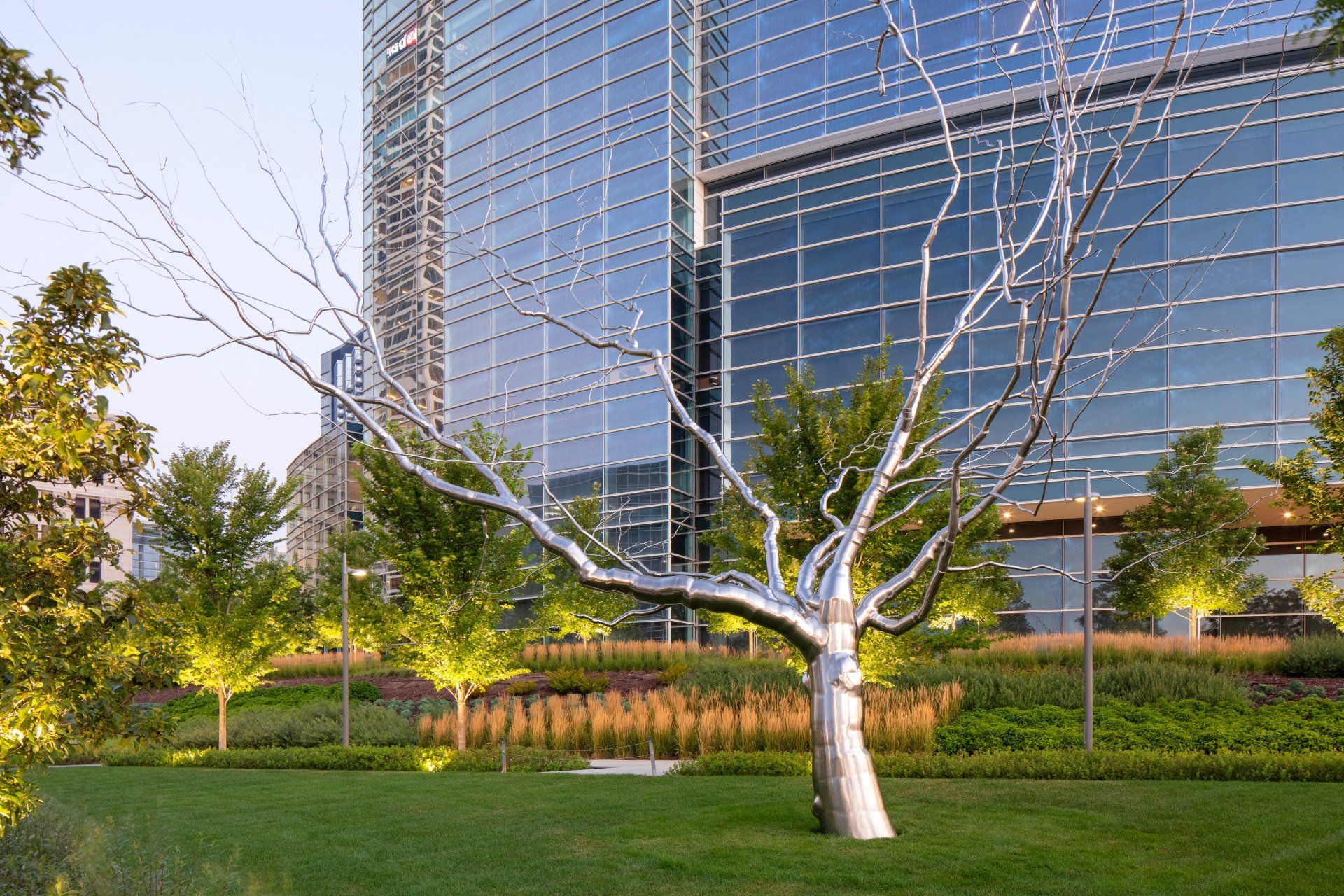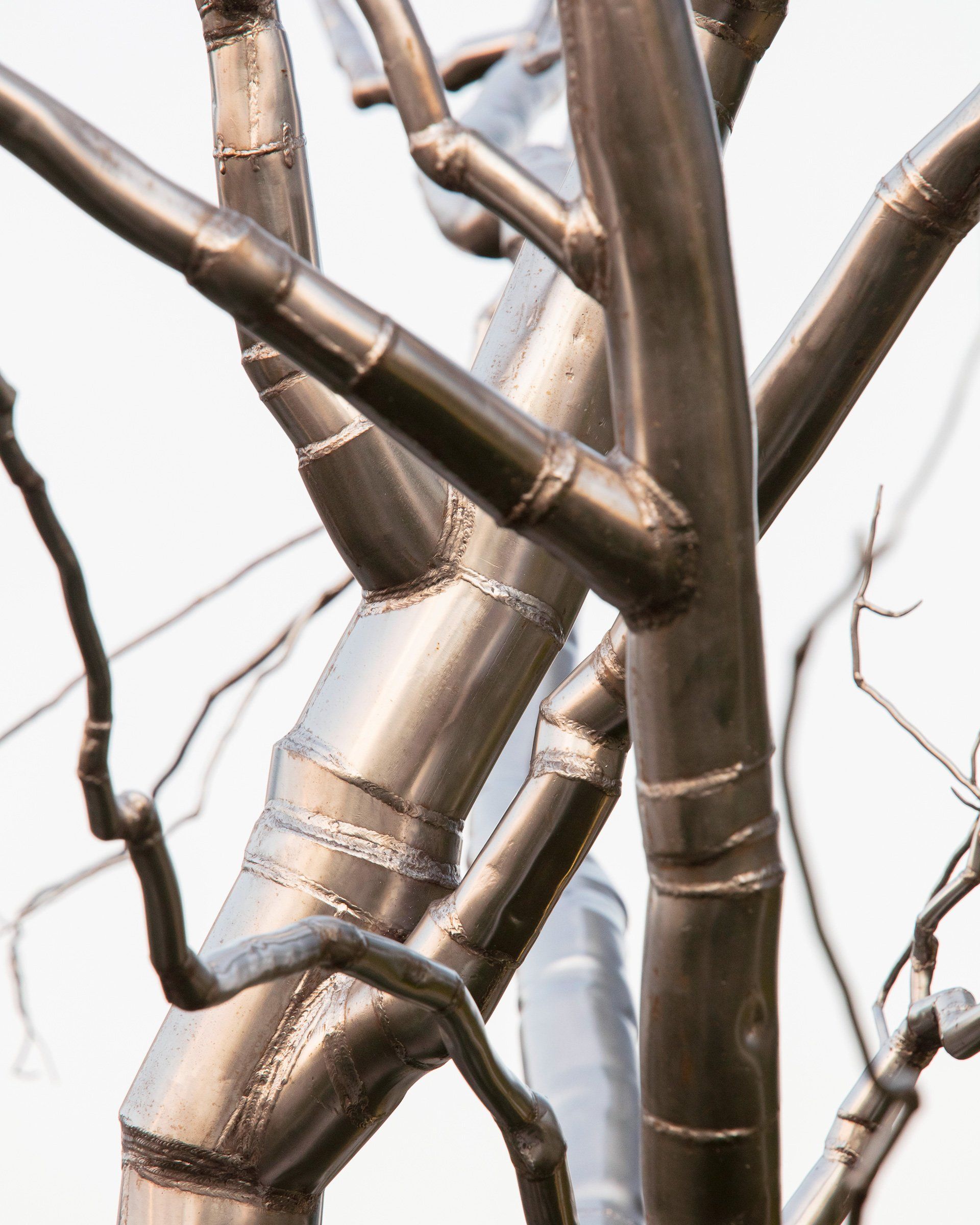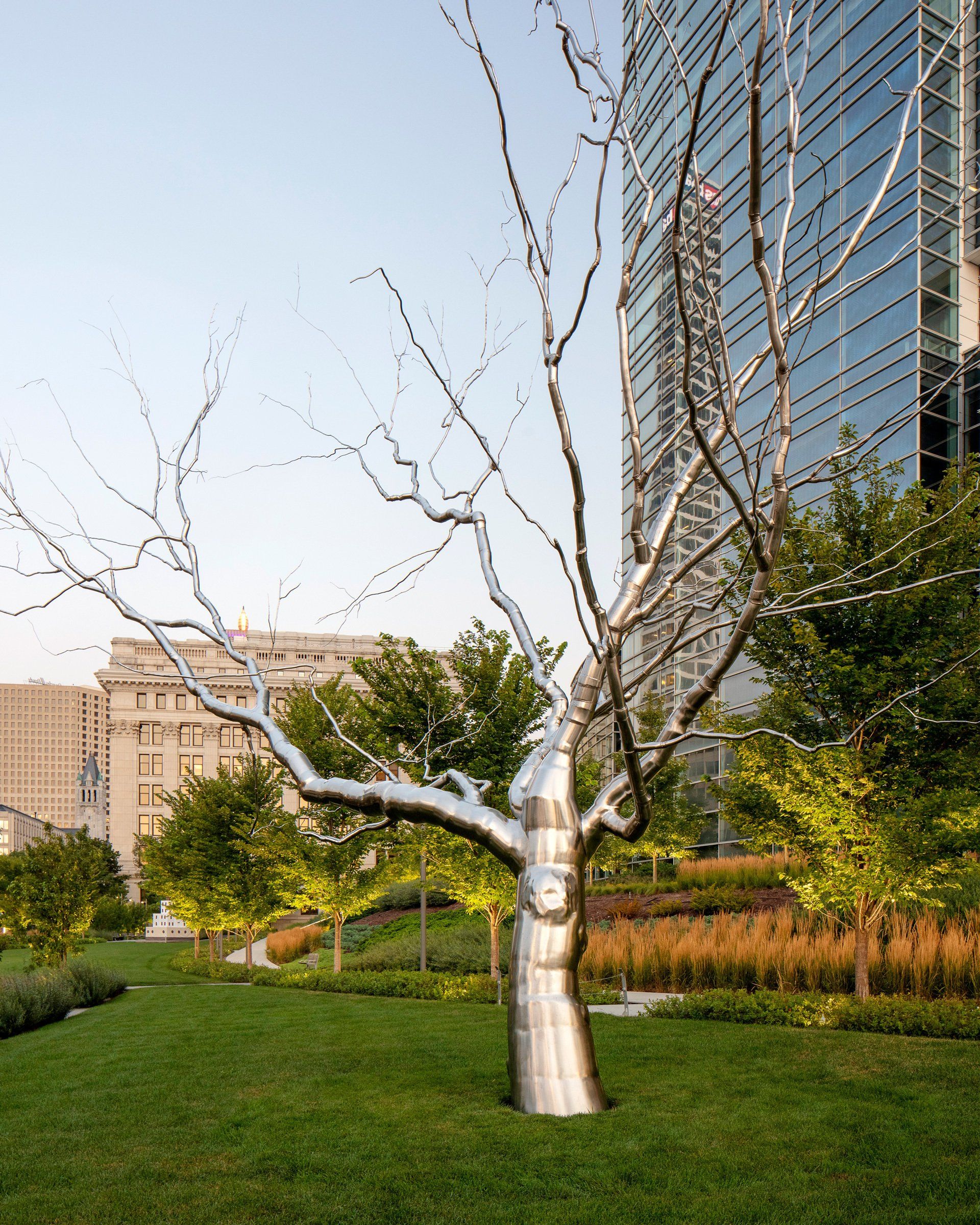2019 Exhibition
2020 Exhibition
Roxy Paine | Cleft
from the series Dendroids
| 2018

Slide title
Write your caption hereButton
Slide title
Write your caption hereButton
Slide title
Write your caption hereButton
Slide title
Write your caption hereButton
Photography: Kevin J. Miyazaki / Sculpture Milwaukee
Roxy Paine | Cleft
from the series Dendroids
| 2018
stainless steel | 444 x 550 x 480
Courtesy the artist and Kasmin Gallery, New York
Roxy Paine is recognized as one of his generation’s most inventive conceptual artists, whose practice revolves around the impact of modern human technologies on nature, including human nature. He creates facsimiles of natural forms (trees, mushrooms), which allows us to ask about the deep connections we have to the other species of our planet.
Paine’s earliest series of mechanical contraptions sought to automate painting and drawing, two activities we associate with the “lone genius” grinding away in a silent attic. Paine’s efforts to invent machines to alleviate the pain and struggle of painting—from the mind, from the heart—leave us with oddly comical apparatus, like writer E.T.A. Hoffman’s nineteenth century automatons. Paine looks to remove the physical and psychological trauma of creating inventive and unique art works, but his machines end up as slightly monstrous, since we humans equate our humanity with the cultural artifacts we leave behind. Perhaps Paine suggests that our modern obsession with science and engineering relies too heavily on the quantifiable, not enough of the quirks of the human mind that can invent new worlds.
Paine is most celebrated for his series of haunting silver trees, based on the branching, tree-like habits of cells. While nature is at the heart of the Dendroid
series, by visualizing the invisible, Paine suggests the human figure. Each branching “tree” is wildly unique, some grasping for the sun’s embrace, some, rooted stoically to a site that can no longer nourish them. Ultimately we see how the microcosm is repeated in the macrocosm, and how humans are truly part of nature.
Cleft
is the latest in the artist’s Dendroid
series, and one of the only pieces the artist has created for himself (not for a specific commission). The tree is cleaved down the center, split by the actions of an arborist, cutting away at the tree’s heart to accommodate power lines. As biologists reveal more about the complex network of communication and nutrient sharing that goes on underground between trees of one species, the more this brutalized tree evokes sympathy. Paine honors this mature member of a species, while suggesting the invisible damage we do to ourselves and each other.
Note on installation: While Paine’s work appears clean and minimal, there is a complex network of support structures beneath the dirt that holds the tree upright—a massive concrete base, robust bolting mechanism, rebar. The work is also grounded to avoid attracting lightning—as any tall deciduous tree might. Installation requires six people approximately five days to install, two human lifts, welding equipment, a water tank, and active security around the perimeter to protect the piece, the installation team and the public."
720 E Wisconsin Ave.




